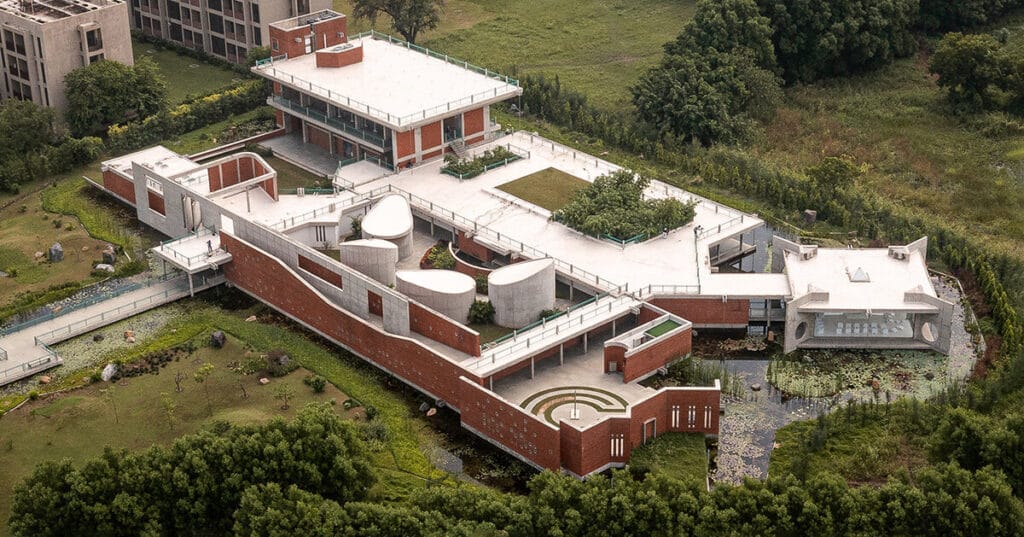studio naqshbandi crafts meditative retreat on indian campus
Spanning one of the 47 hectares of AURO University’s campus in Surat, India, the Sri Aurobindo Integral Life Center (SAIL-C) by Studio Naqshbandi emerges as a space for reflection and spiritual engagement. The center, led by architect Mona Doctor-Pingel, is dedicated to the teachings of Sri Aurobindo and his collaborator, Mirra Alfassa, known as The Mother. Constructed with brick, concrete, and glass, the design incorporates sustainable practices and indigenous landscaping, aligning with the five elements of nature.
The center aims to engage the whole of the senses through its design, inviting visitors to experience space through sight, sound, and touch. As they navigate the complex, they encounter a Zen Garden, a verdant retreat for contemplation, followed by the Sensorium Court, where musical instruments interact with natural elements. Suspended above a bio-pond, the Dhyanshala is a meditative space that offers a moment of deep connection to the water element. Four petal-shaped meditation chambers provide intimate sanctuaries for reflection, each embodying The Mother’s attributes: wisdom, strength, harmony, and perfection. Drawing inspiration from Auroville’s Matrimandir, the architecture features serene, minimalist interiors that enhance spiritual focus.
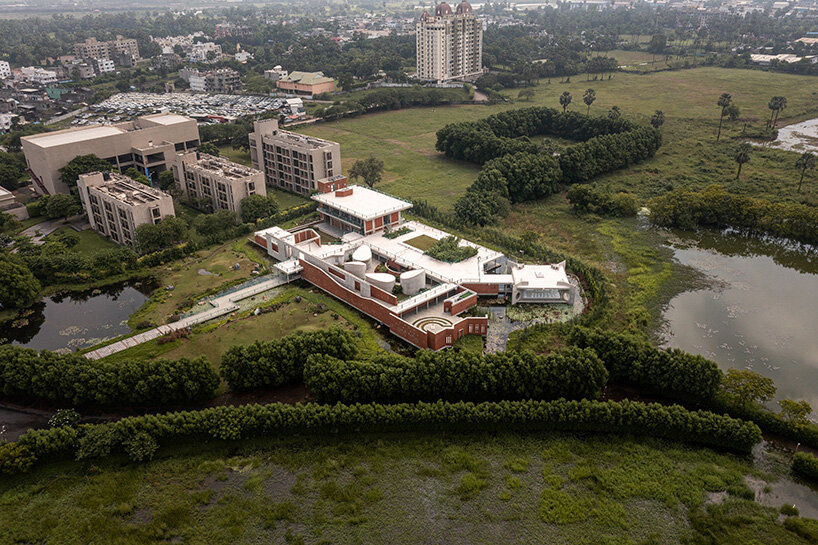
all images by Ishita Sitwala
perennial bio-pond of SAIL-C collects natural rainwater
Auroville-based Studio Naqshbandi transforms the low-lying site into a meditative landscape with a 2,950-square-meter bio-pond that collects natural rainwater. This water body, designed as a perennial self-sustaining ecosystem, symbolizes transcendence, defining the threshold between the outer and inner realms. A bridge spans the pond, inviting visitors to cross into a world of reflection where light, shadow, and water interplay. Three internal courtyards further enhance this dialogue with nature, bringing wind and daylight into the built spaces.
Initiated in 2010, the SAIL-C project faced multiple challenges, including regulatory changes, shifting site locations, and evolving client requirements. Originally conceived as a partially underground structure, the architects reworked the design into a fully above-ground configuration due to modifications in building bylaws. Despite these constraints, the project maintains its original vision, integrating sustainable strategies such as rainwater harvesting and native flora landscaping.
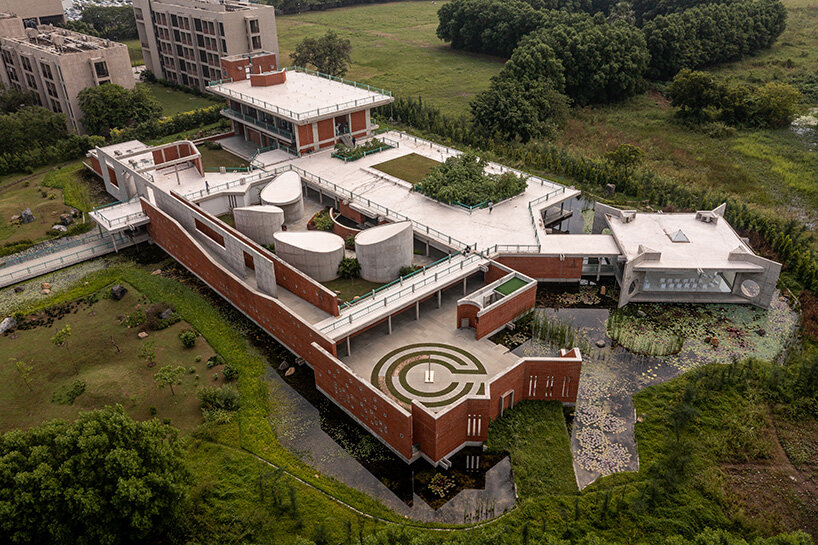
Studio Naqshbandi emerges as a space for reflection and spiritual engagement
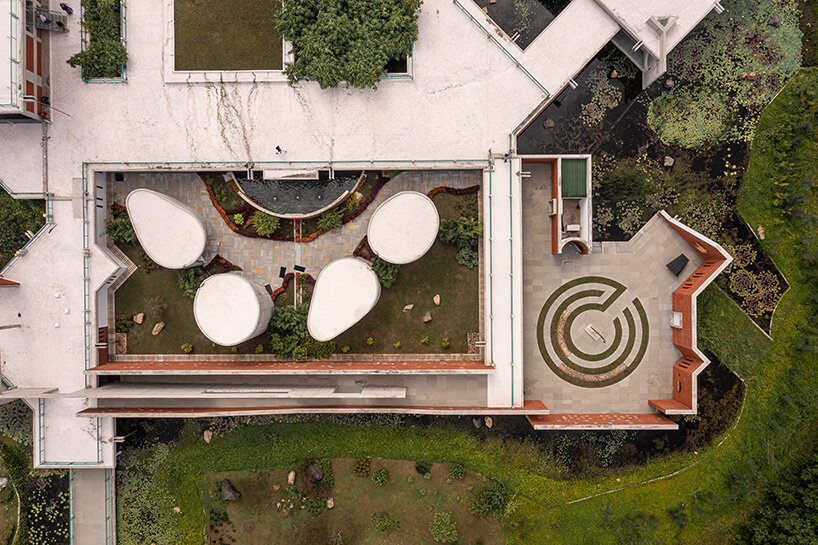
the center is dedicated to the teachings of Sri Aurobindo and his collaborator, The Mother
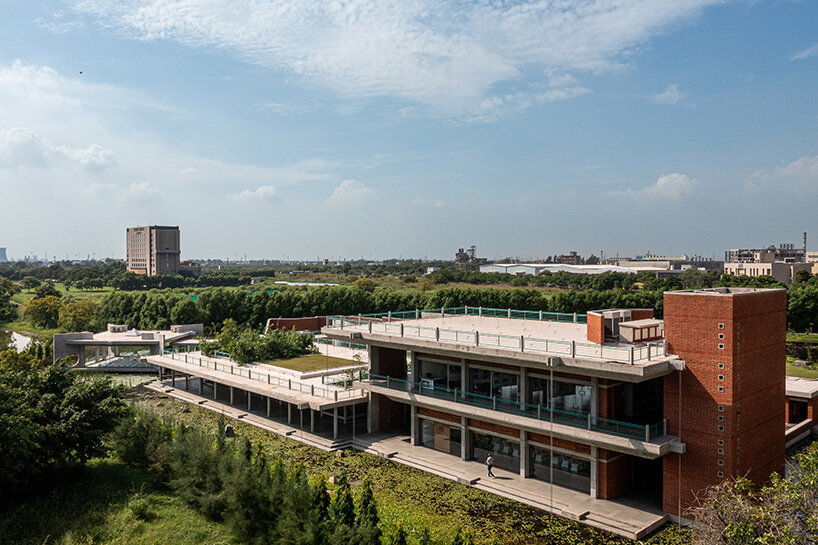
constructed with brick, concrete, and glass, the design integrates sustainable practices
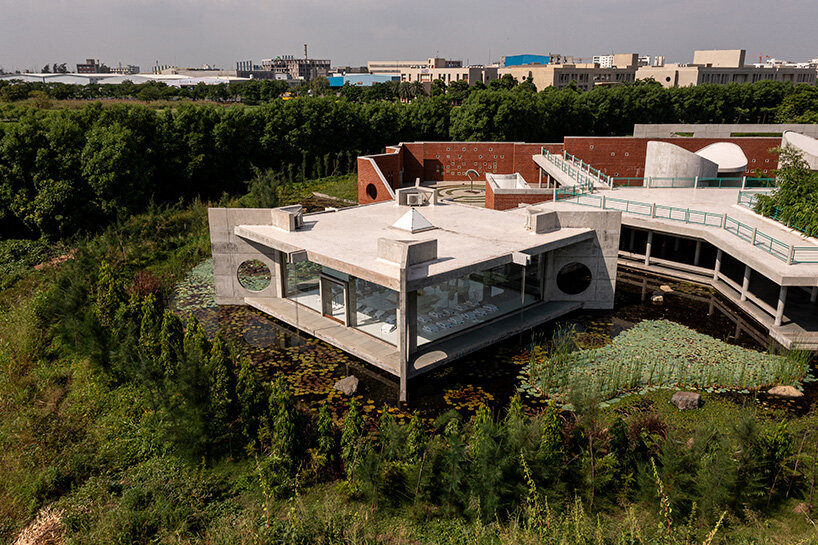
a meditative space floats above a bio-pond

